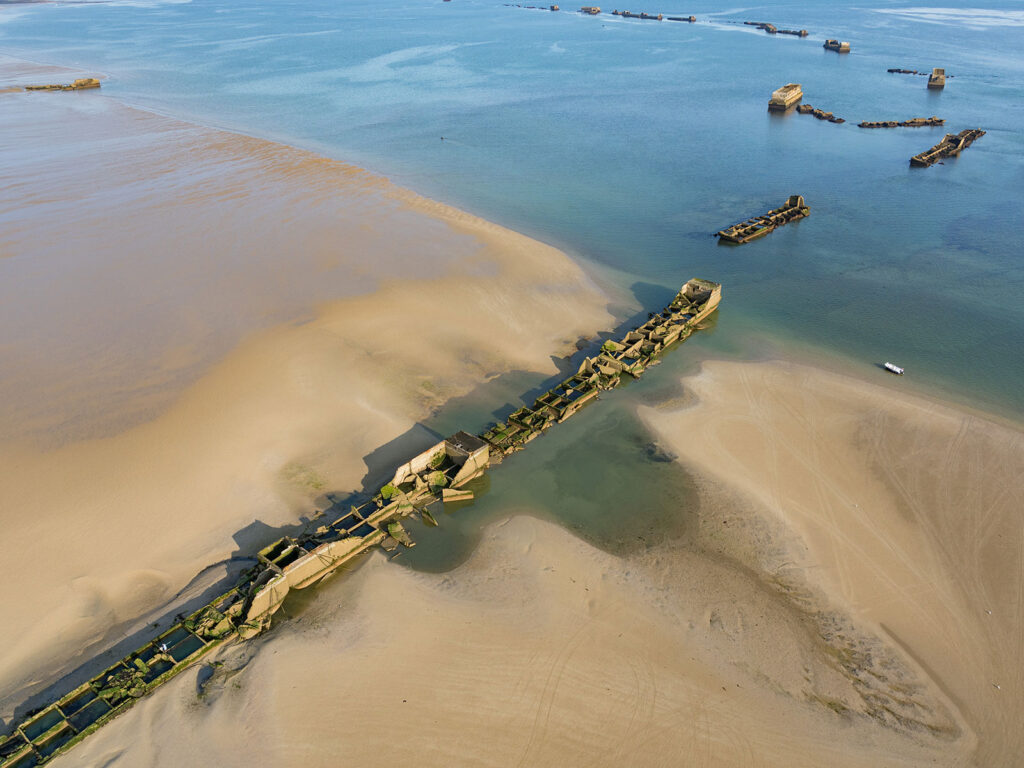Located in northern France, Normandy is a captivating destination that combines a rich historical legacy with picturesque beaches. From its charming coastal towns to its significant World War II sites, Normandy offers a diverse range of experiences for visitors. Immerse yourself in the region’s fascinating history as you explore the iconic D-Day landing beaches and visit the historic Mont Saint-Michel. Whether you are an avid history buff or seek relaxation by the sea, Normandy is a destination that will leave you enchanted and longing for more.
Normandy: An Introduction
Normandy, located in the northwestern part of France, is a region known for its breathtaking landscapes, vibrant history, and rich cultural heritage. Whether you are a history enthusiast, a nature lover, or someone who appreciates art and gastronomy, Normandy has something to offer for everyone. From its famous D-Day beaches to its medieval castles and charming towns, this region is a treasure trove of experiences waiting to be discovered.
Geographical Location
Normandy is situated along the coast of the English Channel and is comprised of two main parts: Upper Normandy and Lower Normandy. The region is known for its picturesque countryside, rolling hills, stunning cliffs, and idyllic coastal towns. It is bordered by Brittany to the southwest and the Île-de-France region to the east.
Historical Significance
Normandy holds immense historical significance, both in the context of France and the world. It was from the shores of Normandy that William the Conqueror set sail in 1066 to claim the English throne, forever changing the course of British history. Normandy also played a pivotal role in the events of World War II, particularly during the Allied invasion on D-Day.
Cultural Heritage
Normandy is renowned for its unique cultural heritage, which is deeply rooted in its history and the traditions of its people. From the architecture of its medieval cathedrals and castles to the local cuisine and traditional festivals, Normandy’s culture is a reflection of the region’s past and its strong sense of identity. Exploring Norman culture is not just about visiting landmarks, but also about immersing oneself in the vibrant communities and experiencing their way of life.
Historical Background of Normandy
To understand the significance of Normandy, it is essential to delve into its historical background, which includes early settlements, Viking invasions, and the famous Norman Conquest.
Early Settlements
Normandy has been inhabited since prehistoric times, with evidence of human presence dating back to the Paleolithic era. The region was home to Celtic tribes during the Iron Age and later came under Roman rule. Roman settlements, such as the city of Lillebonne, still bear witness to this period of history and provide a glimpse into the Roman influence on the region.
Viking Invasions
In the 9th century, Normandy faced a series of Viking invasions that would shape its future. The Vikings, also known as the Norsemen or Normans, initially sought to plunder the region but eventually settled there and assimilated into the local population. It was during this time that the name “Normandy” emerged, derived from the Norse word “Nortmanni,” meaning “Northmen.”
Norman Conquest
One of the most significant events in Norman history is the Norman Conquest of England in 1066. Led by William the Conqueror, who was originally from Normandy, the invasion resulted in the overthrow of the Anglo-Saxon king Harold II and the establishment of Norman rule in England. This event shaped the course of English history and left a lasting impact on both Normandy and Britain.
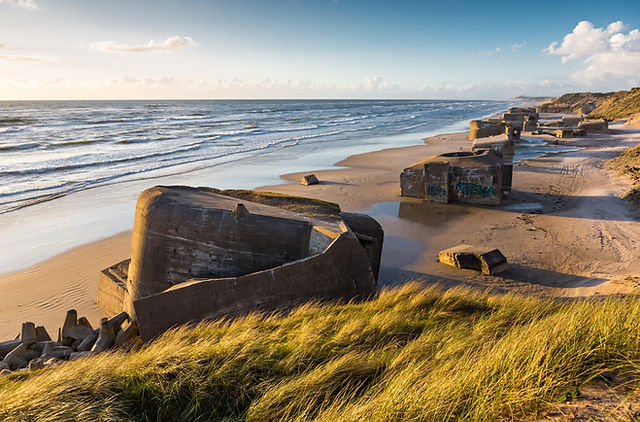
Key Historical Events in Normandy
Normandy has been at the center of numerous pivotal events throughout history. Three of the most notable events in the region’s history include the Battle of Hastings, the Hundred Years’ War, and the Normandy Landings.
Battle of Hastings
The Battle of Hastings, which took place in 1066, marked a turning point in English history and had significant implications for the Normans as well. This decisive battle between the Normans, led by William the Conqueror, and the Anglo-Saxons, led by Harold II, resulted in William’s victory and the eventual Norman Conquest of England. Today, the site of the battle in East Sussex, England, attracts countless visitors who come to learn about this pivotal event.
Hundred Years’ War
The Hundred Years’ War between England and France, which lasted from 1337 to 1453, also had a profound impact on Normandy. The region became a frequent battleground, with both sides vying for control. During this period, Joan of Arc emerged as a powerful symbol of French resistance, leading the French to victory and liberating large parts of Normandy from English occupation.
Normandy Landings
Perhaps the most well-known event in Normandy’s history is the Allied invasion on D-Day, June 6, 1944, during World War II. This massive operation involved troops from the United States, United Kingdom, Canada, and other Allied nations, who stormed the beaches of Normandy to liberate France from German occupation. The successful D-Day landings paved the way for the eventual defeat of Nazi Germany and played a decisive role in the outcome of the war.
Normandy’s Role in World War II
During World War II, Normandy found itself caught in the grips of Nazi occupation. However, it also became a hotbed of resistance and played a crucial role in the liberation of France.
Occupation and Resistance
From 1940 to 1944, Normandy endured the hardships of German occupation. The Nazi regime imposed strict control over the region, with many residents suffering under their rule. However, despite the dangers and risks involved, Normandy became a stronghold of resistance. The Resistance, comprised of brave men and women, conducted undercover activities, gathered intelligence, and sabotaged German operations, all in the hopes of seeing their land freed from Nazi oppression.
D-Day and Liberation
D-Day, on June 6, 1944, marked the beginning of the end for German occupation in Normandy. The Allied forces launched a massive amphibious operation, landing troops, vehicles, and supplies on the Normandy beaches in a bold attempt to push back the Germans. The beaches of Omaha, Utah, Gold, Juno, and Sword were the points of entry for thousands of troops, making the Normandy coastline a battleground of immense historical significance. The bravery and sacrifice of the Allied soldiers led to the liberation of Normandy and a turning point in the war.
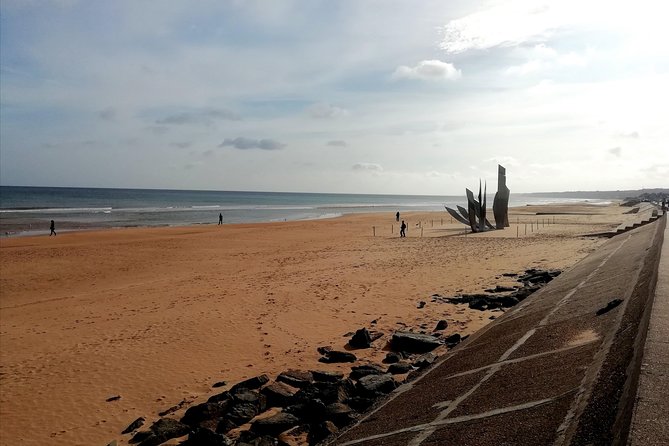
Normandy’s Beaches
The beaches of Normandy not only played a crucial role in World War II but are also a testament to the historical significance of the region.
D-Day Landing Sites
The D-Day landing sites along the coast of Normandy are a pilgrimage destination for history buffs and those seeking to pay tribute to the courage and sacrifice of the Allied troops. These beaches, codenamed Utah, Omaha, Gold, Juno, and Sword, witnessed the largest amphibious invasion in history, marking the beginning of the end for Nazi Germany.
Omaha Beach
Omaha Beach, with its wide stretch of sand and towering cliffs, is perhaps the most famous of the D-Day landing sites. It was one of the most heavily fortified areas and became the site of intense fighting. Today, visitors can walk along the beach, visit the Omaha Beach Memorial, and reflect on the bravery and sacrifice of the troops who fought there.
Utah Beach
Utah Beach, located to the west of Omaha Beach, was another landing site during the D-Day invasion. It was less heavily fortified compared to Omaha Beach, allowing the Allied forces to establish a foothold more easily. Today, Utah Beach is home to the Utah Beach Museum, which houses a collection of artifacts and tells the story of the landings.
Gold Beach
Gold Beach, situated between Omaha Beach and the British landing site at Sword Beach, was assigned to British forces during the invasion. It was an important center for Allied logistics and played a significant role in securing the eastern flank of the invasion. Today, visitors can explore the remnants of Mulberry Harbour, an artificial harbor constructed in the aftermath of D-Day.
Juno Beach
Juno Beach was assigned to Canadian forces during the D-Day landings. The beach and surrounding areas saw heavy fighting, with Canadian soldiers facing strong German resistance. The Juno Beach Centre is a museum dedicated to honoring the Canadian contribution to the war effort and preserving the memory of those who fought and died on Juno Beach.
Sword Beach
Sword Beach was the easternmost landing site during the Normandy invasion and was assigned to British forces. The beach was successfully captured, despite encountering significant resistance. Visitors can explore the area and visit the Pegasus Bridge Museum, which commemorates the crucial role played by the British paratroopers in securing the bridgehead at Sword Beach.
Historical Sites in Normandy
In addition to the D-Day beaches, Normandy is home to a wealth of historical sites that offer insight into the region’s past.
Mont Saint-Michel
Perched on a rocky island, Mont Saint-Michel is one of the most iconic sights in France. This medieval abbey, surrounded by medieval walls and narrow cobblestone streets, is a UNESCO World Heritage site and attracts millions of visitors each year. A visit to Mont Saint-Michel is like stepping back in time, with its stunning architecture, charming shops, and panoramic views of the surrounding bay.
Rouen Cathedral
Rouen Cathedral, immortalized in Claude Monet’s famous series of paintings, is a masterpiece of Gothic architecture. This historic cathedral, with its breathtaking facade and intricate stained glass windows, is a key landmark in the city of Rouen. Inside, visitors can admire the grandeur of the nave and the stunning 13th-century astronomical clock.
Bayeux Tapestry
The Bayeux Tapestry is a unique historical artifact that depicts the events leading up to the Norman Conquest of England. This embroidered cloth, measuring nearly 70 meters in length, is an incredible work of art and a primary source documenting the Norman Conquest. Visitors can marvel at the intricate details and ancient craftsmanship of this remarkable piece of history.
Caen Memorial Museum
The Caen Memorial Museum is one of the most important World War II museums in Europe. It explores the causes and consequences of the war, offering visitors a profound understanding of the human experience during this dark period. The museum’s exhibits cover a wide range of topics, from the rise of Nazism to the liberation of France.
Château de Falaise
Located in the town of Falaise, the Château de Falaise is a medieval fortress that holds great historical significance. It was here that William the Conqueror, the Duke of Normandy, was born in 1028. Today, visitors can explore the castle’s imposing walls, towers, and inner courtyards while learning about the life and legacy of this renowned historical figure.
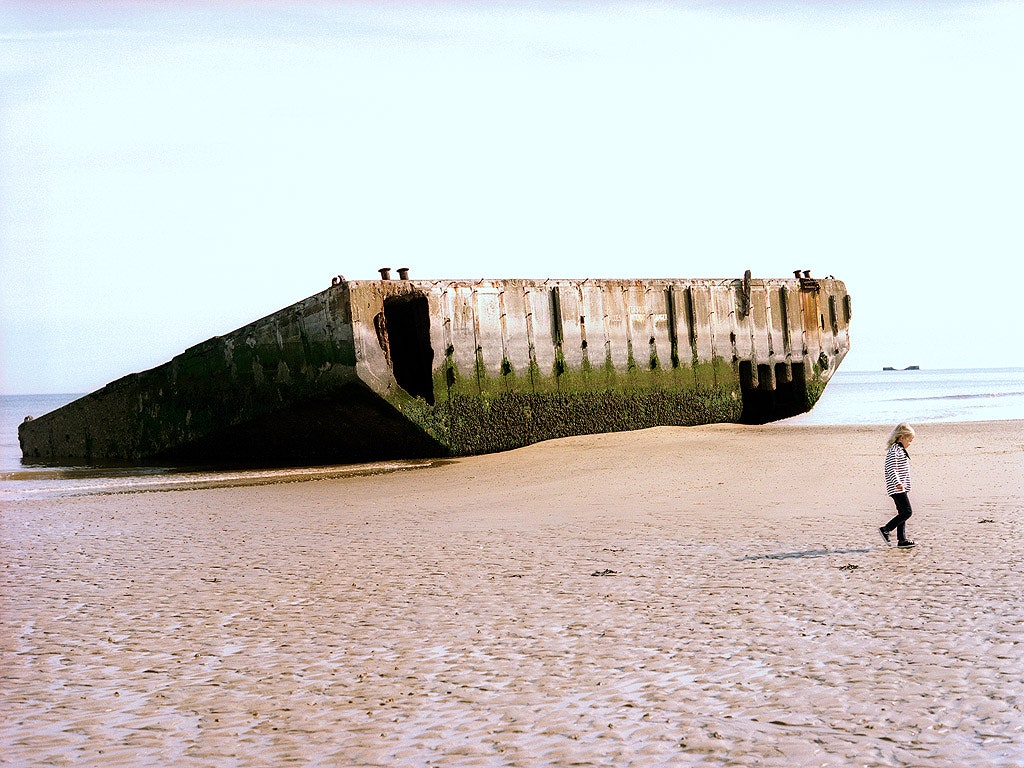
Normandy’s Cultural Attractions
Normandy’s rich cultural heritage extends beyond its historical sites. The region’s cuisine, festivals, and cultural events are renowned throughout France and the world.
Norman Cuisine
Normandy is known for its delicious culinary delights, particularly its dairy products, seafood, and apple-based specialties. From creamy Camembert and Pont-l’Évêque cheeses to succulent oysters and mussels harvested from the region’s coastal waters, Normandy’s cuisine is a feast for the senses. Don’t miss the chance to try traditional dishes, such as Norman apple tart, seafood stew, and the famous Norman cider.
Traditional Festivals
Normandy’s calendar is filled with vibrant festivals that celebrate the region’s cultural traditions. The Fête de la Mer in Honfleur, the Festival des Boréales in Caen, and the Festival du Cinéma Américain in Deauville are just a few examples of the diverse celebrations that take place throughout the year. These festivals offer a wonderful opportunity to experience Norman culture and immerse yourself in the local way of life.
Normandy Cider Route
For cider enthusiasts, the Normandy Cider Route is a must-visit attraction. Stretching through picturesque orchards and charming villages, this scenic route allows visitors to discover the art of cider-making in Normandy. Along the way, you can taste a variety of ciders, from sweet to dry, and learn about the traditional methods used to produce this beloved Norman beverage.
Cultural Events
Normandy is also home to a multitude of cultural events that showcase the region’s artistic talents. From dance and theater performances to art exhibitions and music festivals, there are countless opportunities to indulge in the arts. The Festival Normandie Impressionniste, which pays homage to the region’s famous Impressionist painters, is a cultural highlight that attracts visitors from far and wide.
Exploring Normandy’s Natural Beauty
Beyond its historical sites and cultural attractions, Normandy is blessed with an abundance of natural beauty. The region’s diverse landscapes offer awe-inspiring views and picturesque settings.
Cliffs of Étretat
The Cliffs of Étretat are a natural wonder that has inspired countless artists and writers over the centuries. These majestic cliffs, carved by the relentless force of the sea, offer breathtaking views of the English Channel. Strolling along the cliff paths or relaxing on the pebble beaches below, you can’t help but be captivated by the sheer beauty of this iconic Normandy landmark.
Cotentin Peninsula
The Cotentin Peninsula, located in the northwest corner of Normandy, is a haven for nature enthusiasts. From the rugged landscapes of La Hague to the tranquil marshes of the Cotentin and Bessin Regional Natural Park, the peninsula boasts a diverse range of ecosystems. Hiking, bird-watching, and exploring quaint fishing villages are just a few of the activities that await visitors to the Cotentin Peninsula.
Cap de la Hague
Situated at the tip of the Cotentin Peninsula, Cap de la Hague is a wild and windswept headland that offers stunning panoramic views of the Atlantic Ocean. This rugged coastline is a paradise for nature lovers, with its dramatic cliffs, pristine beaches, and abundant wildlife. Take a hike along the coastal trails and be prepared to be mesmerized by the unspoiled beauty of this untamed landscape.
Alabaster Coast
The Alabaster Coast, named for its stunning white cliffs, stretches along the eastern part of Upper Normandy. This picturesque coastline is dotted with charming seaside towns, such as Étretat and Fécamp, where visitors can relax on the sandy beaches or explore historic fishing harbors. The contrast between the azure sea, the chalky cliffs, and the lush green landscapes is truly a sight to behold.
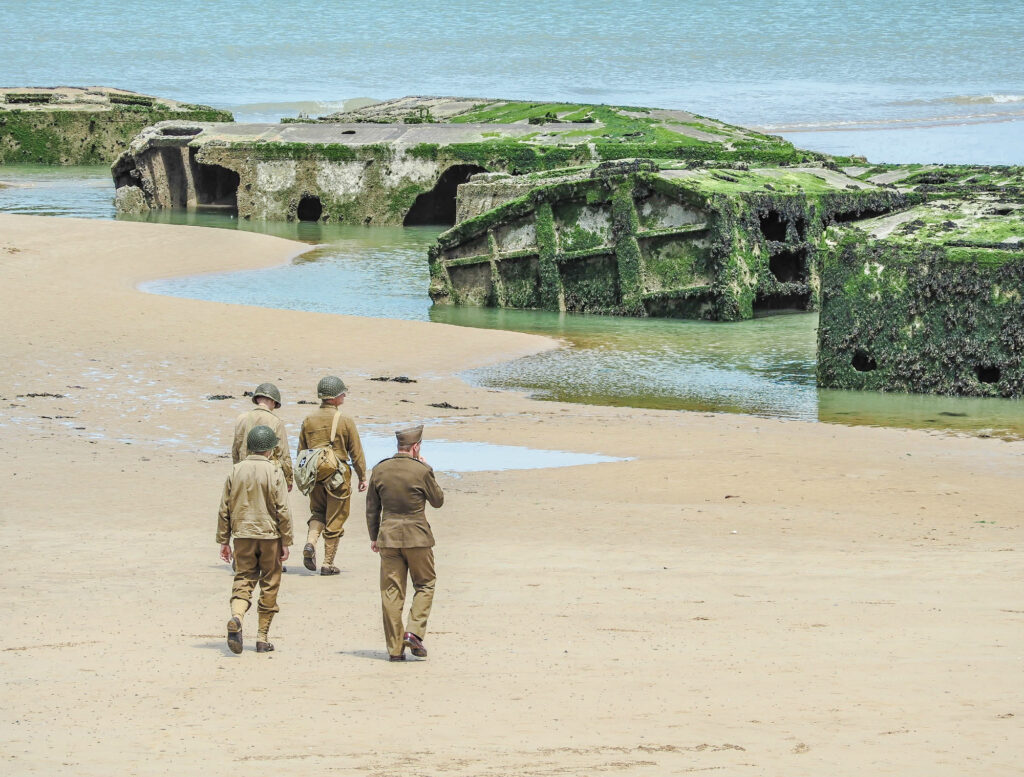
Normandy’s Famous Artists
Normandy has been a source of inspiration for many renowned artists, including Claude Monet, Camille Pissarro, and Eugène Boudin. The region’s landscapes and light have captivated their imaginations and left an indelible mark on the art world.
Claude Monet
Claude Monet, one of the founders of Impressionism, spent much of his life in Normandy. His famous series of paintings depicting the water lilies in his garden at Giverny is a testament to his love for the region. Visitors to Giverny can explore Monet’s house and gardens, which have been meticulously preserved and offer a glimpse into the artist’s world.
Camille Pissarro
Camille Pissarro, another prominent Impressionist painter, was born on the island of Saint Thomas in the Caribbean but spent significant periods of his life in Normandy. His works often depicted rural scenes and landscapes, capturing the essence of the region’s natural beauty. Writers and artists can follow in his footsteps and visit places that inspired him, such as Rouen and Le Havre.
Eugène Boudin
Eugène Boudin, considered one of the precursors to Impressionism, hailed from the coastal town of Honfleur. Known for his seascapes and beach scenes, Boudin captured the unique light and atmosphere of Normandy. Art enthusiasts can visit the Eugène Boudin Museum in Honfleur to view a collection of his works and gain insights into his artistic journey.
Visiting Normandy: Practical Information
If you’re considering a visit to Normandy, here’s some practical information to help you plan your trip.
Transportation
Normandy is well-connected by various modes of transportation. International visitors can fly into airports in Rouen, Caen, or Le Havre, with direct flights from select destinations. Alternatively, travelers can also arrive in Paris and take a train or hire a car to reach Normandy.
Once in Normandy, renting a car is the most convenient way to explore the region, allowing you to easily reach its various attractions and navigate the picturesque countryside. Normandy’s well-maintained road network makes driving a pleasant experience. Alternatively, public transportation, such as trains and buses, are available for those who prefer not to drive.
Accommodation
Normandy offers a range of accommodation options to suit every budget and preference. From luxury hotels and charming bed and breakfasts to self-catering cottages and campsites, there are plenty of choices for visitors. Whether you prefer staying in a historic château, a quaint seaside inn, or a cozy countryside retreat, you’re sure to find the perfect place to rest after a day of exploring.
Best Time to Visit
Normandy’s climate is temperate, with mild summers and cool winters. The best time to visit depends on your preferences and the activities you wish to pursue.
Spring and early summer, from April to June, offer pleasant weather and colorful landscapes, making it an ideal time for exploring Normandy’s natural beauty and attending cultural events. The warm summer months, from July to September, are perfect for enjoying the beaches and outdoor activities. Fall, from September to November, brings a vibrant display of autumn foliage, creating a picturesque backdrop for exploring historic sites and savoring seasonal delicacies.
Useful Tips
Here are a few tips to enhance your visit to Normandy:
- Dress in layers: Normandy’s weather can be changeable, so it’s advisable to dress in layers to adapt to the varying temperatures throughout the day.
- Try the local cuisine: Don’t miss the opportunity to indulge in Norman specialties, such as fresh seafood, Camembert cheese, and apple-based dishes. Take the time to savor the flavors of this gastronomic region.
- Learn a few phrases in French: While many people in Normandy speak English, knowing a few basic French phrases will go a long way in enhancing your interactions and immersing yourself in the local culture.
- Respect the historical sites and beaches: When visiting the D-Day beaches and other historical sites, it is important to show respect and honor the memory of those who fought and sacrificed their lives. Follow any guidelines or restrictions at these sites and be mindful of their historical significance.
- Embrace the slower pace of life: Normandy is known for its relaxed and unhurried way of life. Take the time to slow down and savor each experience, whether it’s exploring a charming village, enjoying a leisurely meal, or simply taking in the beauty of the surroundings.
With its rich history, stunning landscapes, and vibrant culture, Normandy is a destination that offers endless opportunities for discovery and immersion. From the famous D-Day beaches to the charming towns and artistic heritage, this region is a treasure trove waiting to be explored. So pack your bags, embrace the friendly charm of Normandy, and get ready for an unforgettable journey into the heart of this captivating region.
